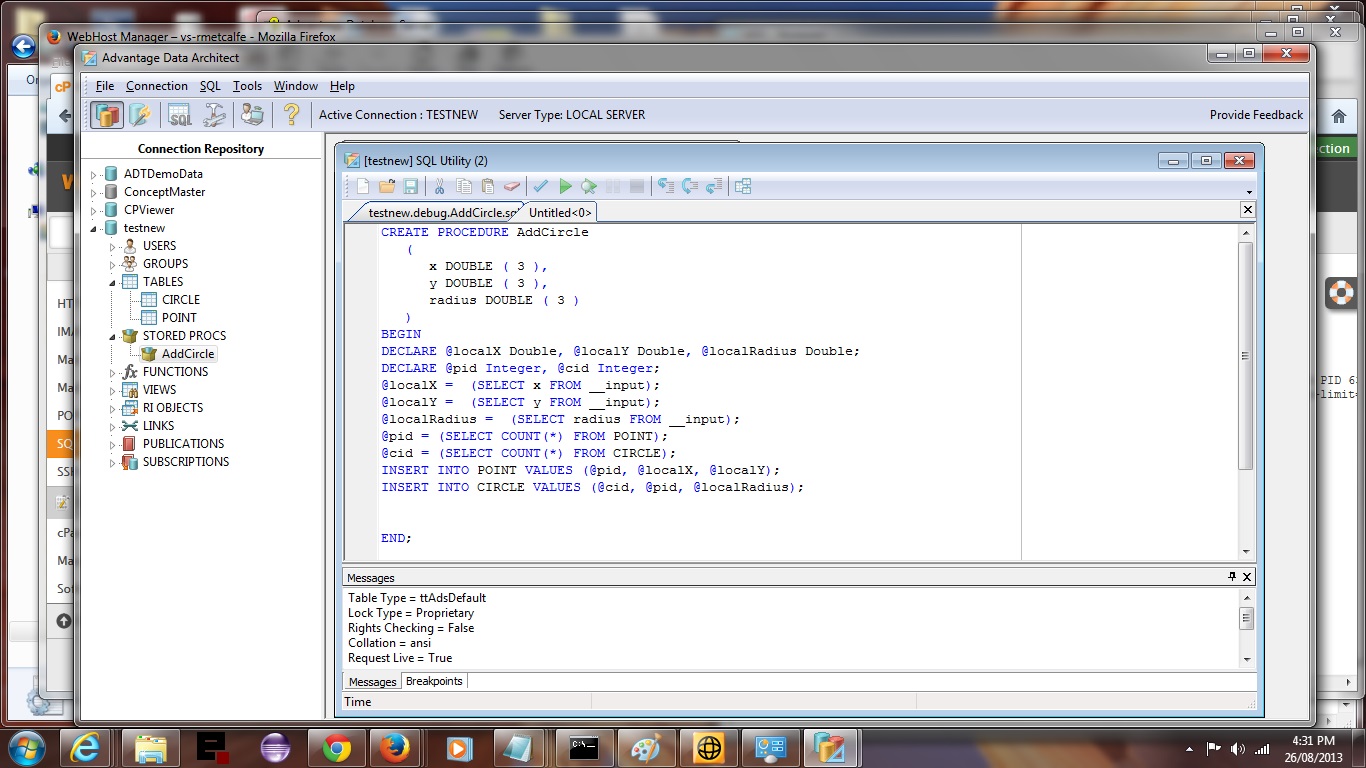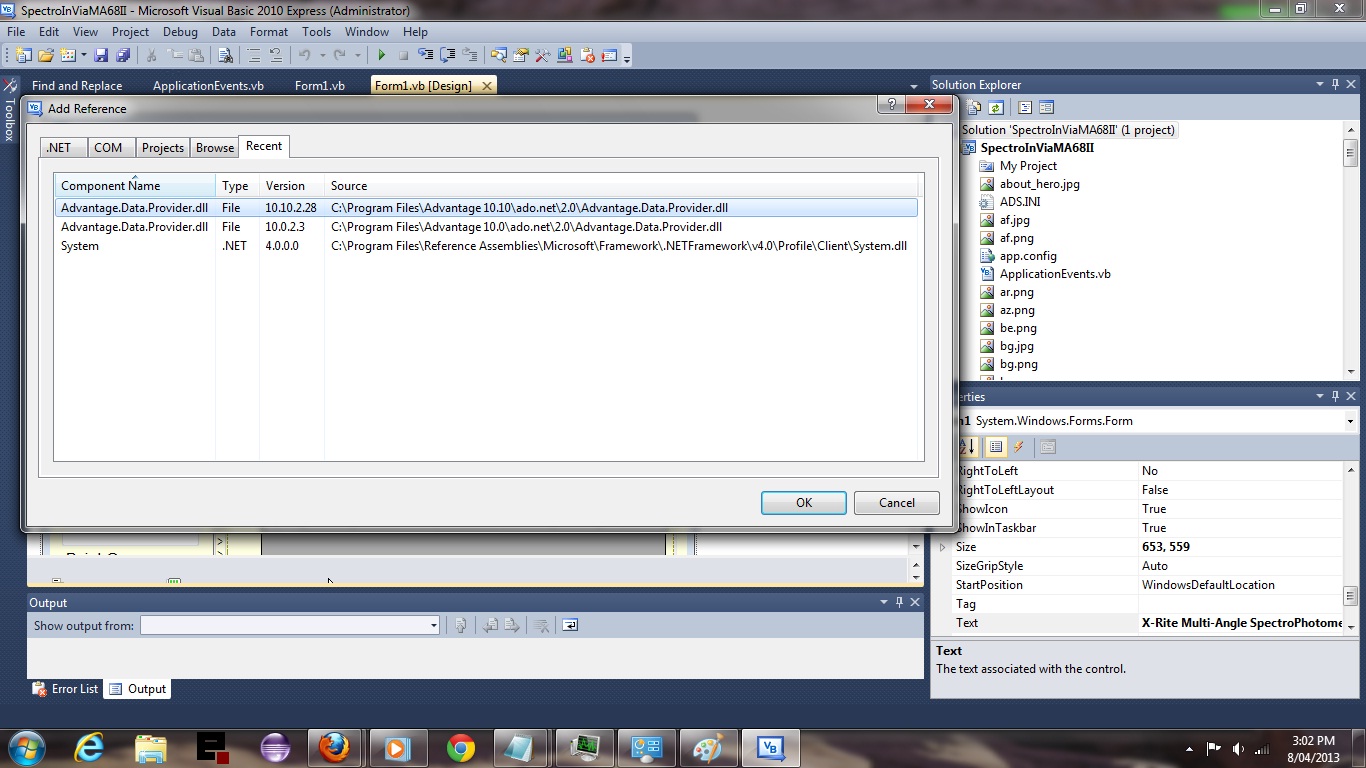Today’s tutorial uses the database application called Advantage, and adds to a previous tutorial called Advantage Primer Tutorial presented below, to oversee the results of some SQL code calls to create tables called POINT and CIRCLE used to store information defining a circle, and then it creates an Advantage Stored Procedure in the database to help add circle data with an AddCircle Stored Query operations. The tutorial takes place on a Windows desktop. Let’s see below what Wikipedia says about Stored Procedures generally.
A stored procedure is a subroutine available to applications that access a relational database system. A stored procedure (sometimes called a proc, sproc, StoPro, StoredProc, sp or SP) is actually stored in the database data dictionary.
Typical use for stored procedures include data validation (integrated into the database) or access control mechanisms. Furthermore, stored procedures can consolidate and centralize logic that was originally implemented in applications. Extensive or complex processing that requires execution of several SQL statements is moved into stored procedures, and all applications call the procedures. One can use nested stored procedures by executing one stored procedure from within another.
Stored procedures are similar to user-defined functions (UDFs). The major difference is that UDFs can be used like any other expression within SQL statements, whereas stored procedures must be invoked using the CALL statement.[1]
Here is some downloadable Advantage SQL code which shows the Advantage SQL commands performed and can be renamed to AddCircle.sql as required.
Please enjoy today’s tutorial.
Previous tutorial Advantage Primer Tutorial is shown below.
Welcome to the Advantage (Database Server) Primer Tutorial … or APT for short, because it is apt, and not because I cut and paste a lot.
Advantage Database Server is a relational database management system (RDBMS) for small to medium sized businesses by Sybase iAnywhere. Database author Cary Jensen describes Advantage as follows: “Advantage has been around since 1993, when it was introduced to provide a stable solution for Clipper developers who were tired of slow performance and corrupt indexes inherent to file server-based databases. Over the years, ADS has grown in both popularity and features. Advantage is now a mature product with an impressive collection of features that rival many of the more expensive and complicated database servers”.[1]
“In short, the Advantage Database Server is a high-performance, low-maintenance, remote database server that permits you to easily build and deploy client/server applications and web-based applications”.[2]
Advantage Database Server is an excellent database to use and its SQL is an excellent tool to learn and use in conjunction with the Visual Studio suite of Visual C# and VB.Net, where its integration is quite good.
Its database structure is easy to follow with individual Windows files for each table’s contents and a separate individual file for a table’s index data. This is a fairly big difference in architecture to MS-SQL.
In the primer tutorial you can see the Advantage Data Architect program in use after a successful install. Want to direct you towards some useful links below.
Link to Advantage Database Server more information … via Wikipedia, from where quote above came.
Link to Advantage Database Server download page … via Sybase.
Link to Advantage Database Server installation advice page … via Sybase.
Link to Advantage Database Server (developer) home at Sybase (a SAP company) … via Sybase (a SAP company).
Link to Advantage Database Server jobs done … Advantage Database Server jobs done … some of personal experience.
If this was interesting you may be interested in this too.
If this was interesting you may be interested in this too.




